When a dairy owner rekindled his love for racing, a spectacular motorsports heaven was created – the Barber Vintage Motorsports Museum. Located in the southeastern US state of Alabama, the 228,650-square-foot museum is the outcome of sheer passion for speed coupled with an ambition to create something unique. It is the world’s largest motorcycle collection with over 1,800 vintage beauties under one roof, spanning over 100 years of production and belonging to 200 different manufacturers from 22 countries.
George W Barber, the 84-year-old man behind the museum, grew up racing Porsches and claiming 63 first place wins behind the wheel. In 1970, after his father passed away, he shifted gears to become a full-time businessman, and quite a strong-willed one. But Barber’s passion for speed was not forgotten. When opportunity knocked at his door, the petrol head reunited with racing cars – but this time he wasn’t just burning rubber. He began collecting and restoring some good old classic cars in 1988.

George W Barber is the man behind the world’s largest motorcycle collection
After a few months into the project, Barber realised that the best and the largest car collections in the world had already been assembled, and disassembled, and reassembled. The road to success was left far behind. But the business maverick was determined about doing what no one else had done before. This is when some meaningful advice from his longtime friend and an old school motorcycle enthusiast – Dave Hooper – came in handy. Barber shifted his focus from cars to motorcycles.
The two-wheeled beauties fascinated Barber like nothing else had ever done. The engineering and tinkering of motorcycles were unmasked – the brakes, the suspension, the braking systems, the cylinder heads were all visible up front. He called them ‘moving works of art’ that one could endlessly marvel at. The motorcycle collection was flagged off by a trio of Honda V-Fours and a rare 1952 Victoria Bergmeister gifted by Hooper.

1952 Victoria Bergmeister was gifted to Barber by his old friend Dave Hooper
Barber went full throttle with his dream project, collecting 450 motorcycles and 20 race cars in a short span of time. He then established the Barber Vintage Motorsports Museum as a not-for-profit entity and opened its doors to the public in 1995. The collection has only grown over time. He sold off his dairy business in 1997. “It was a hell of a lot more dangerous than racing,” he jokes about it in interviews.
The five-storey motorsports museum showcases classics from Harley-Davidson, Honda, and Indian — to Showa, DSK, and Cagiva. It encapsulates the history of motorcycles through machines from almost every timeline – from the first internal combustion bikes to the cutting-edge, futuristic prototypes. Exhibits have been laid out like snapshots in time – a 1919 Harley-Davidson and a 2020 Zero SR/F electric have been placed together to show a century of innovation. There are currently 97 Harley-Davidsons in the museum. Masterpieces from the likes of Jawa, Ducati, Norton, Triumph and Vincent find place in the sanctum sanctorum of racing bikes.

The museum showcases classics from Harley-Davidson, Honda, and Indian — to Showa, DSK, and Cagiva.
A rare 1995 Britten V1000 racing bike is one of the most outstanding pieces exhibited in the museum. It is one of the 10 units ever made by engineering maestro John Britten. The motorcycle’s lightweight carbon fiber body and unconventional pink and blue hues make it turn heads.
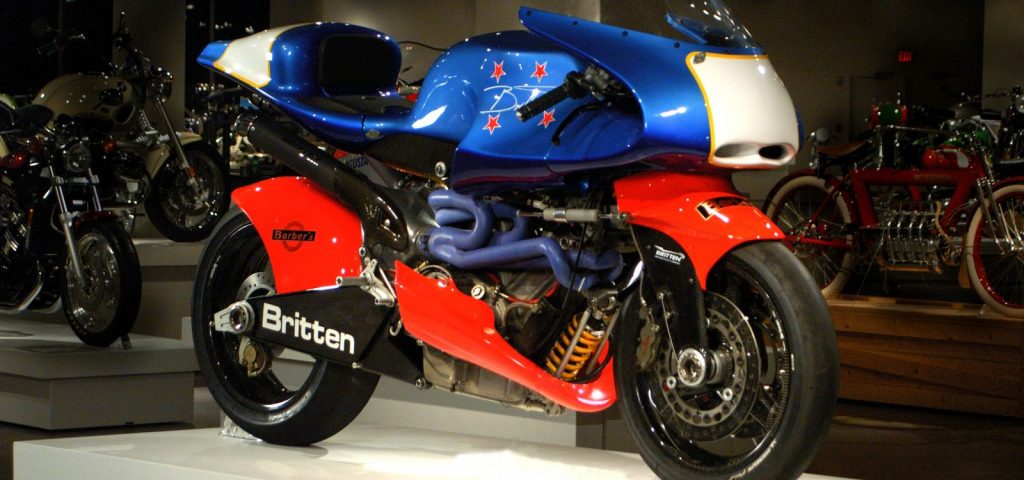
1995 Britten V1000
A primitive – 1894 Hildebrand & Wolfmuller – is another notable machine in the collection. The world’s first mass-produced motorcycle, it could churn out 2.5 hp of power and offer a top speed of 30 mph.
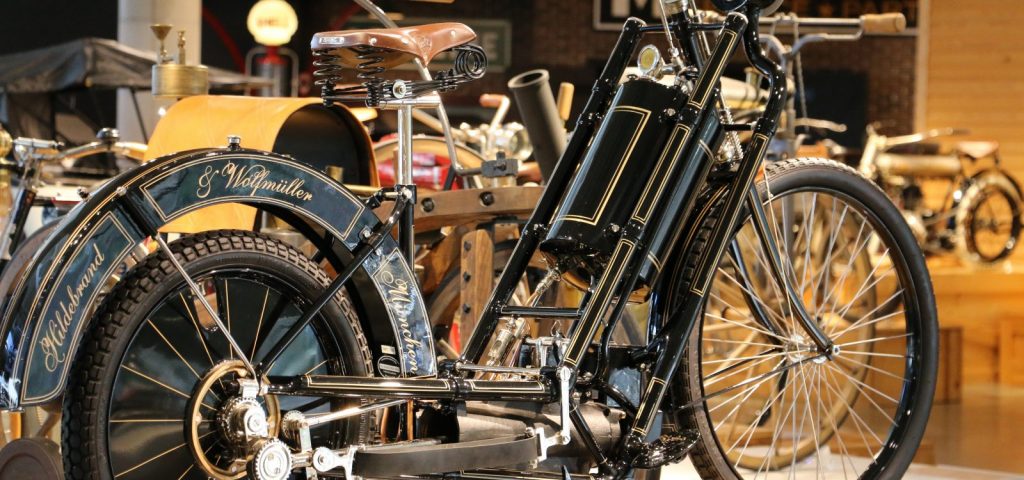
1894 Hildebrand & Wolfmuller
The museum also proudly displays the most extensive Lotus race cars collection in the world alongside a few others such as the 1964 Ferrari F-158, in which John Surtees won the 1964 Formula 1 Driver’s World Championship.
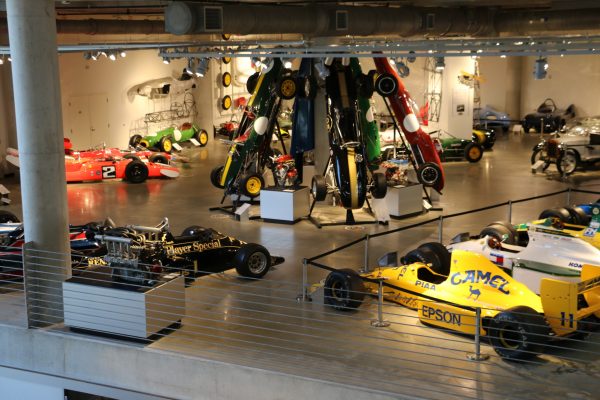
Lotus race cars collection anchored by the Lotus 21
When Barber started his collection, he was determined to offer much more to his fellow adrenaline junkies. The museum staff excels in conserving, preserving and/or restoring the bikes to running condition – maintaining a ‘living’ museum. More than 900 motorcycles are on display at any given time, of which 99% can be started within an hour. The restoration team evaluates and studies each bike that is brought into the museum to restore it back to its original condition. Used parts or accessories are sourced for bikes with missing components. Some are even made ready for competitions while some are kept unrestored.
In creating the largest motorcycle collection, Barber’s love for racing had not taken a backseat. In 1992, he launched a race program to promote the collection and The Barber Racing team was born. It first competed in the American Historic Racing Motorcycle Association (AHRMA) series in Daytona. With premier race wins under its belt, the team soon created a buzz in the vintage motorcycle community. It raced until 1998, bringing seven national championships home.
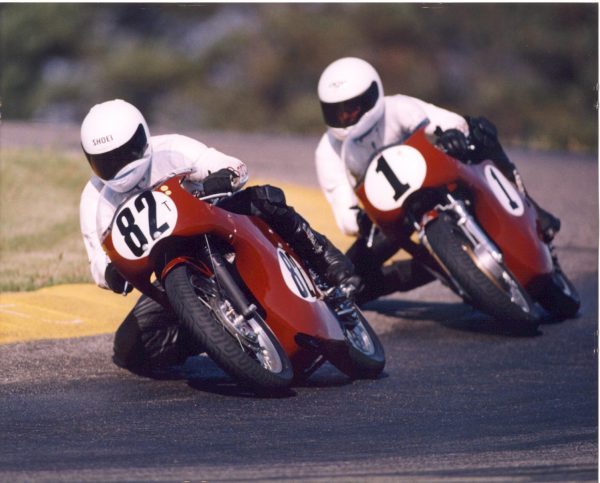
The Barber Racing team brought home seven national championships
In 1997, when Barber loaned 21 motorcycles to the Guggenheim Museum in US for the ‘Art of the Motorcycle’ exhibit, he little knew that it would be a defining moment for the museum. After a successful showcase, the motorcycle exhibit travelled to Chicago and Bilbao, Spain. The thrill was such that Barber set out on a quest to build a road course for his living museum in Birmingham itself. You see, his heart was always on track.
Soon, an 880-acre sprawling park was acquired on the outskirts of Birmingham to accommodate a world-class 16-turn, 2.38-mile racetrack. In Barber’s world, it had to be the best racing facility one could ever see, so he consulted world champion racers John Surtees and Dan Gurney for precision. In September 2003, the Barber Motorsports Park was opened to the public, which today holds the reputation of the August National of motorsports. The landscape has served as the stage for numerous vehicle debuts and platform for filming commercials. It also houses the Porsche Track Experience and Barber Proving Grounds – used to demonstrate vehicle capabilities. It has been used for product debuts, kart racing, driving schools, and safety instruction over the years.
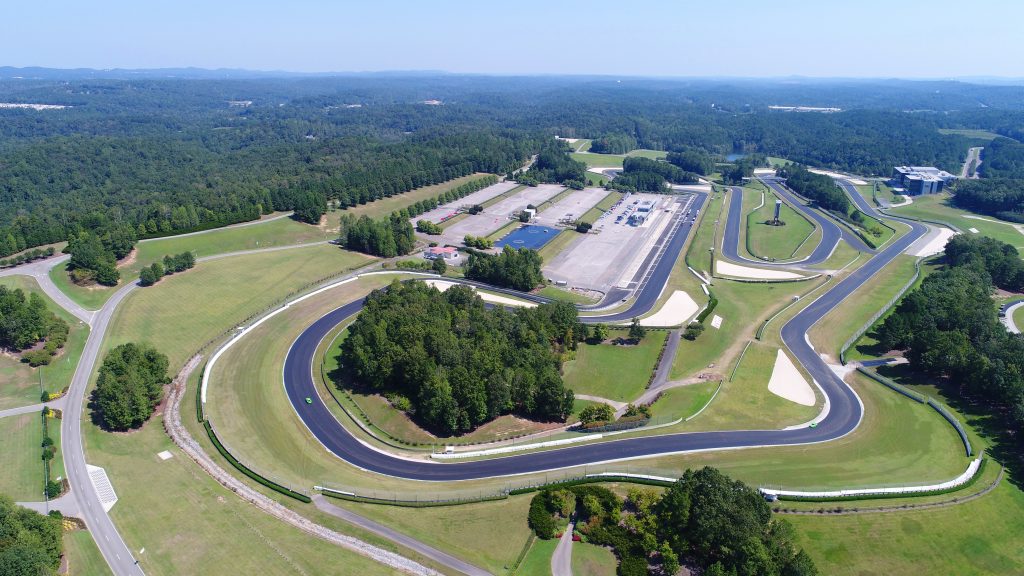
The 880-acre sprawling Barber Motorsports Park
George Barber’s motorsports park is exceptional, just like his motorcycle collection. It equally excites gardening fanatics and racing fans. Most of the panorama remains untouched forest, while the patches touched by humans have been adorned with artistic embellishments. From Giant ant sculptures carrying off treats and huge spider model with its web – to cast out of tigers prowling around and a Zombie Frenchman statue – the park has the quirkiest installations.
The racetrack is the site of the IndyCar Series Grand Prix of Alabama with capacity for nearly 100,000 spectators. Barber has always preferred quality over quantity, which is reflected in the experience provided to his guests at the IndyCar series. Unlike the traditional elbow-to-elbow seating, spectators at the Barber Motorsports park watch races from embankments or temporary grandstands. They can take a tram from one spot to the other if they please to change their viewing direction.

Barber Proving Grounds
Every year, the museum organises the Barber Vintage Festival, one of the largest vintage motorcycle festivals in the US. The three-day festival features fan zones, stunt shows, a nd vintage motorcycle racing. The museum and the park attracted 368,000 visitors last year. Admission fee for the museum ranges from USD 20+tax for an adult to USD 15+tax for a child. A three-day weekend pass costs USD 40+tax.
The museum had been long in the making but Barber’s dream came true in 2014 when the Guinness Book of World Records recognised it for being the world’s largest motorcycle collection. Since then, it has firmly held on to that honour.
(Photo Credit: Barber Vintage Motorsports museum website)



